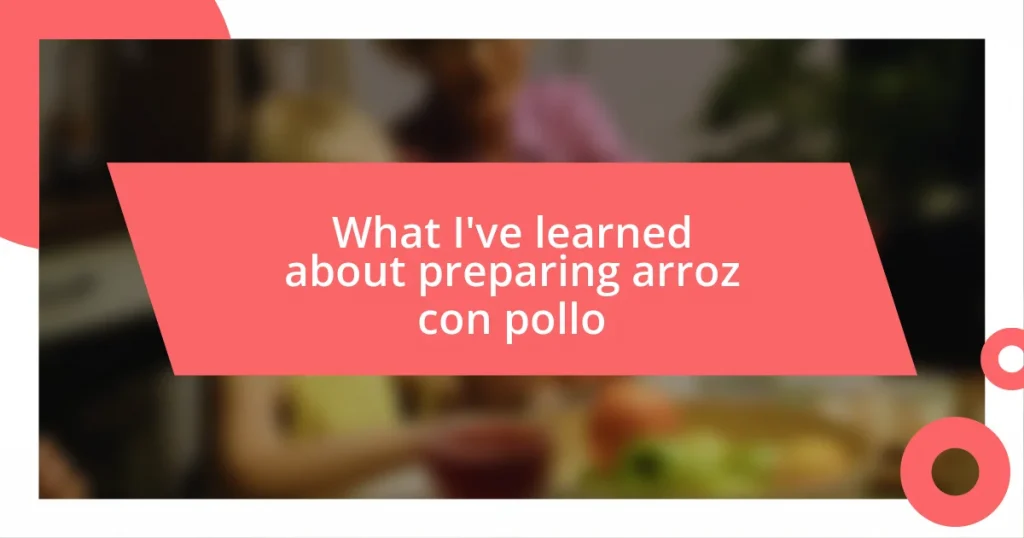Key takeaways:
- Mastering basic knife cuts such as dicing and julienne enhances cooking efficiency, presentation, and flavor.
- Creating a safe and organized cutting environment, including using non-slip cutting boards and proper knife storage, is crucial for kitchen safety.
- Regular maintenance of knife sharpness through honing and professional sharpening ensures better performance and a smoother cooking experience.
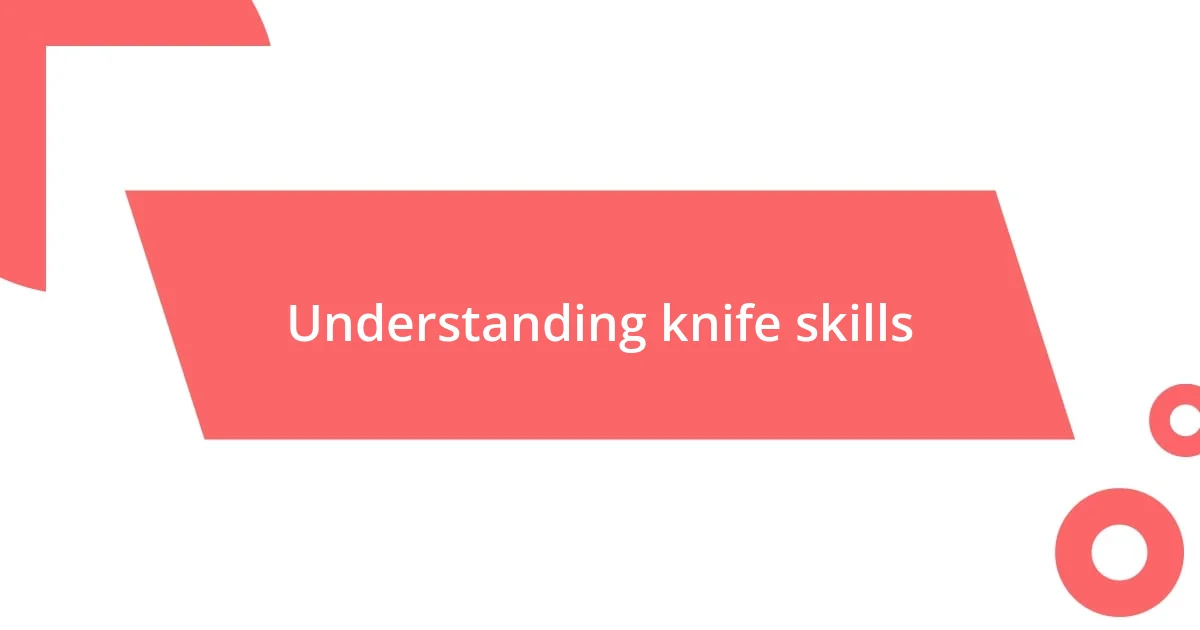
Understanding knife skills
Knife skills are the cornerstone of effective cooking, and I’ve learned this through countless hours spent in the kitchen. Have you ever felt the frustration of trying to chop an onion evenly, only to end up with uneven pieces? I certainly have, and it was those moments that pushed me to really understand and improve my knife techniques.
When I first picked up a chef’s knife, I remember the thrill of how easily it sliced through vegetables—it’s truly a game changer. Learning the proper grip and technique not only makes cooking more enjoyable but also enhances safety. There’s nothing worse than a slip-up due to poor handling, right?
For me, mastering the basic cuts like the dice, julienne, and chiffonade felt like unlocking a new level in my culinary journey. Each cut not only changes the appearance of the dish but impacts the cooking time and flavor absorption. Have you ever noticed how a beautifully sliced bell pepper elevates a salad? It’s these details that make all the difference.
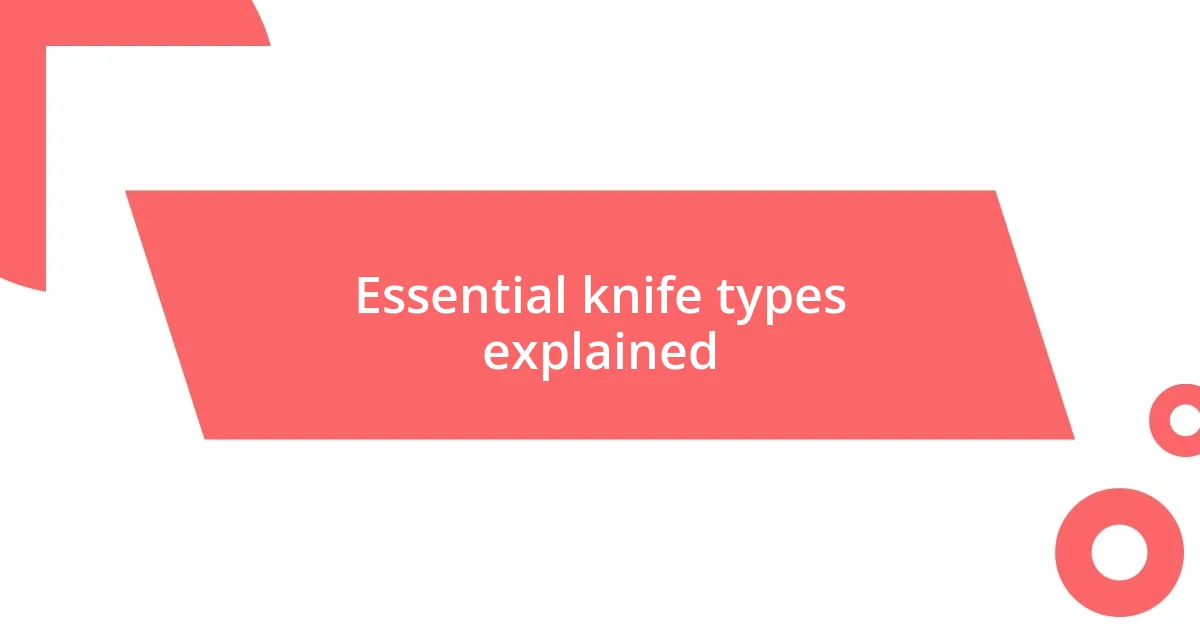
Essential knife types explained
There are several essential knife types that every home cook should be familiar with. The chef’s knife, for instance, is the most versatile tool in my kitchen; I often reach for it when chopping, slicing, or dicing ingredients. Though I’ve encountered moments of intimidation using it, the joy of creating finely chopped herbs or perfectly sliced veggies makes it worth the effort.
The paring knife, while smaller, showcases its importance when I need precision. I recall using it to peel delicate fruits—like a peach for a summer tart. That fine control is sometimes just what I need to avoid wasting precious ingredients. Understanding how to utilize each knife type effectively has truly transformed my cooking experience.
A specialized knife that I didn’t appreciate until later is the serrated knife. At first, I dismissed it, thinking a chef’s knife could do it all. However, the first time I saw its magic on a crusty bread loaf, I was hooked! It effortlessly glided through the crust without crushing the soft inside, and that’s when I knew every knife has its place in the culinary world.
| Knife Type | Use |
|---|---|
| Chef’s Knife | Chopping, dicing, and slicing various ingredients |
| Paring Knife | Peeling and intricate cuts on fruits and vegetables |
| Serrated Knife | Slicing bread and other soft items without squishing |
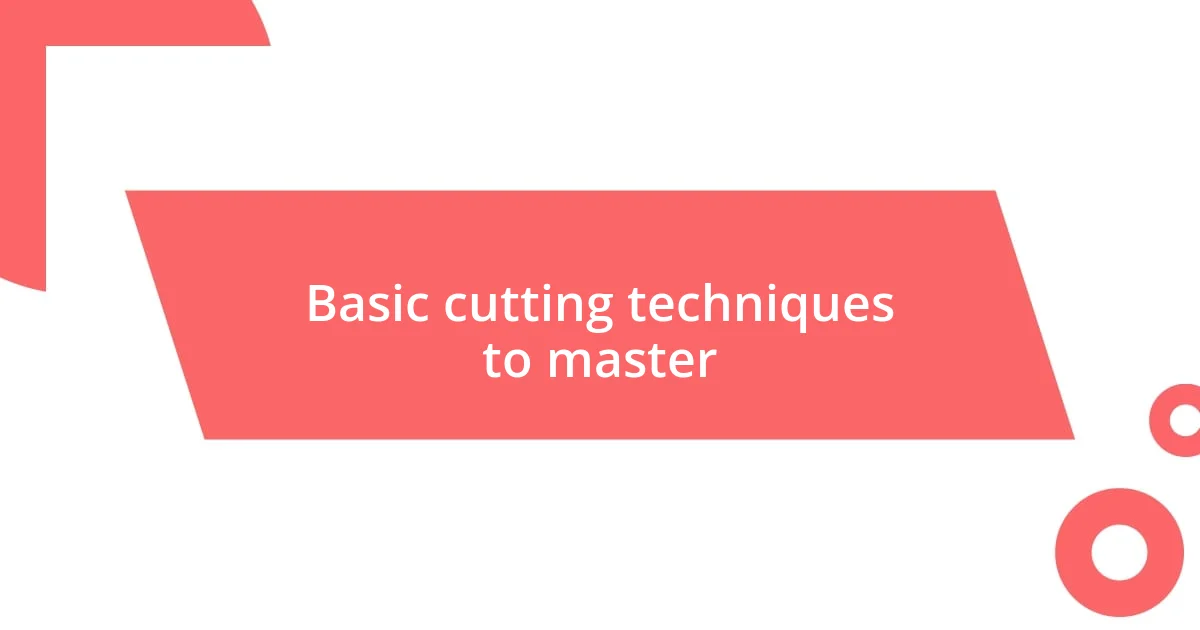
Basic cutting techniques to master
When it comes to basic cutting techniques, it’s essential to focus on the fundamentals. I remember my initial struggle with the julienne cut—really, it felt like I was attempting a complex dance without knowing the steps! But as I practiced, it became second nature. Mastering these cuts not only improves your efficiency but also adds a professional touch to your dishes.
Here are some key cutting techniques to master:
- Chopping:
- Dicing: This involves cutting food into small, uniform cubes; it enhances even cooking.
- Julienne: A method for cutting vegetables into thin, matchstick-like strips; it’s great for stir-fries.
- Chiffonade: A technique for slicing leafy greens and herbs into thin strips; it adds elegance to your presentation.
- Mincing: This involves finely chopping herbs or garlic, boosting flavor distribution in your dishes.
Employing these basic cuts has transformed my cooking approach. I vividly recall the first time I expertly diced an onion; it felt like a culinary rite of passage! My eyes may have shed a few tears, but the uniformity of the pieces made for a beautiful base in my favorite stew. Developing these skills gives a sense of accomplishment and confidence in the kitchen.
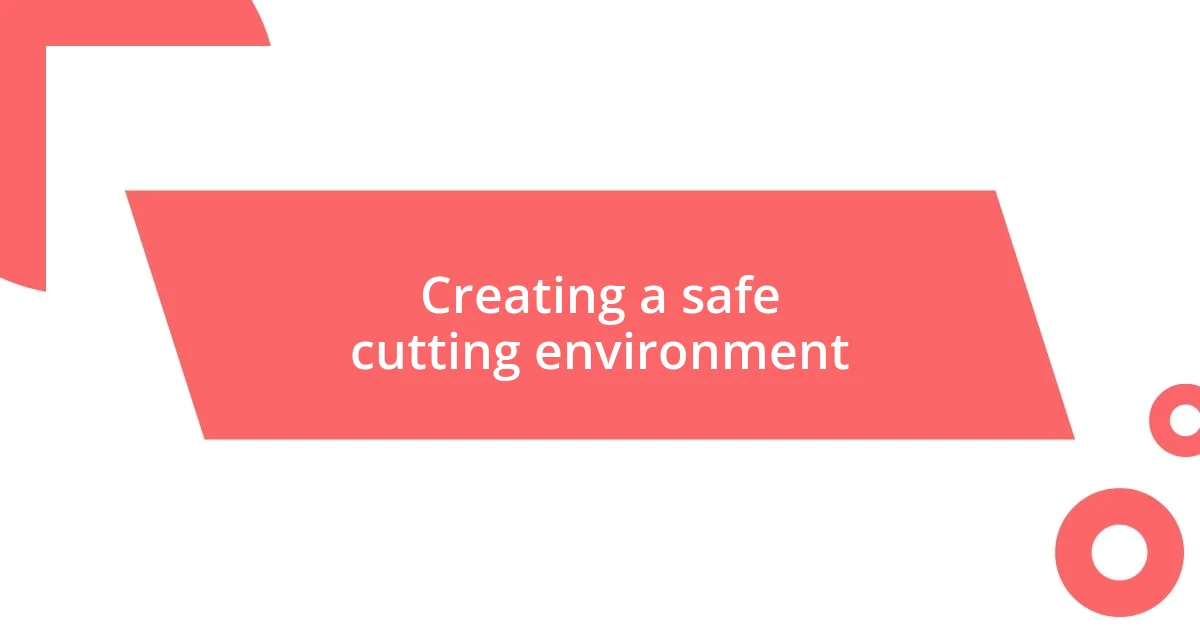
Creating a safe cutting environment
Creating a safe cutting environment is crucial for any home cook. I can’t emphasize enough how a clutter-free workspace can make all the difference. The first time I nearly sliced my finger was a wake-up call that taught me to always keep my cutting board clear of unnecessary items. It’s all about having enough space to move comfortably, reducing distractions that could lead to accidents.
Another aspect I’ve found vital is using the right cutting boards. I prefer a sturdy, non-slip board, which provides stability while I chop. There’s something incredibly reassuring in that grounded feeling—I remember my early days when a flimsy board would slide around, causing more frustration than focus. It’s fascinating how something so simple can dramatically elevate your confidence and safety while handling sharp knives.
Lastly, never underestimate the power of proper knife storage. I transitioned to a magnetic strip after years of dealing with drawer chaos. The moment I hung my knives, I felt an instant sense of security. Not only could I clearly see my tools, but it also minimized the chances of accidental cuts when reaching for them. Isn’t it interesting how the small changes we make can lead to a more enjoyable cooking experience?
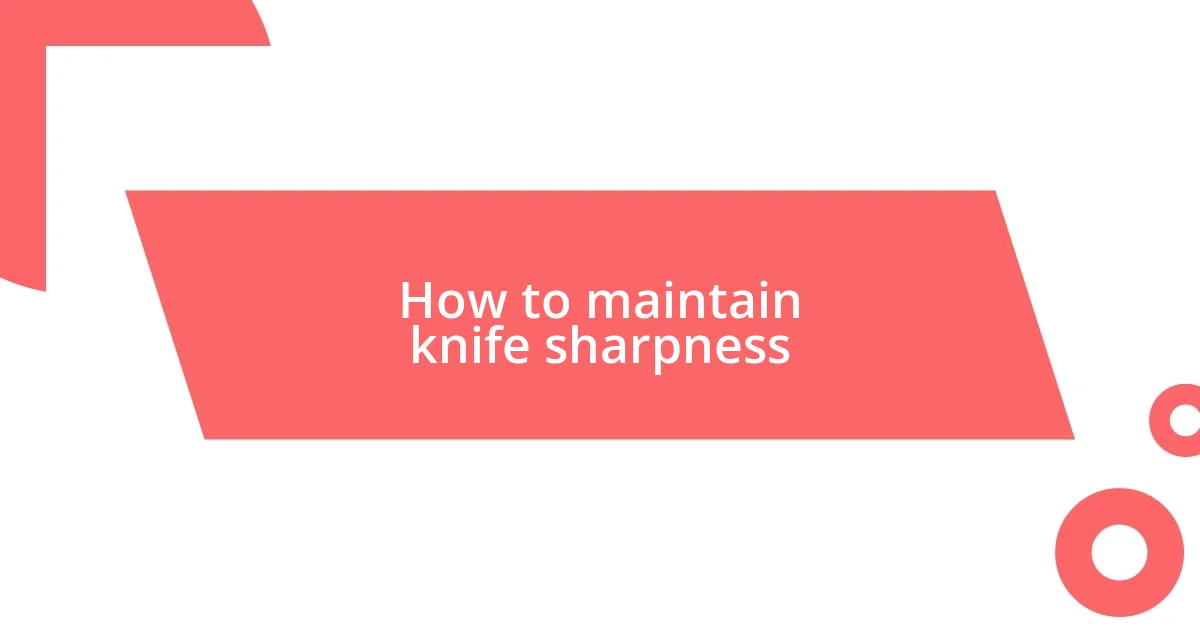
How to maintain knife sharpness
Maintaining knife sharpness is crucial for a smooth cooking experience. I’ve learned that honing my knives regularly, even between sharpenings, keeps them in tip-top shape. It’s like giving them a little pep talk—my knives seem to perform better with that tiny bit of encouragement!
I remember the moment I purchased my first honing steel. At first, I was unsure how it worked, but after a quick tutorial online, I was ready to give it a try. The first time I glided my knife against the steel, I could almost hear it sigh in relief! It became a ritual; just a few swipes before I started cooking, and I felt like a pro, slicing through veggies effortlessly.
Of course, a professional sharpening service can do wonders, too. I schedule mine every six months, and let me tell you, the first time I experienced the difference was revelatory. It’s like getting a brand-new knife! Keeping a consistent routine can seem tedious, but trust me, that sharp knife makes all the difference. Do you really want to struggle through cutting something that should be simple? I think not!
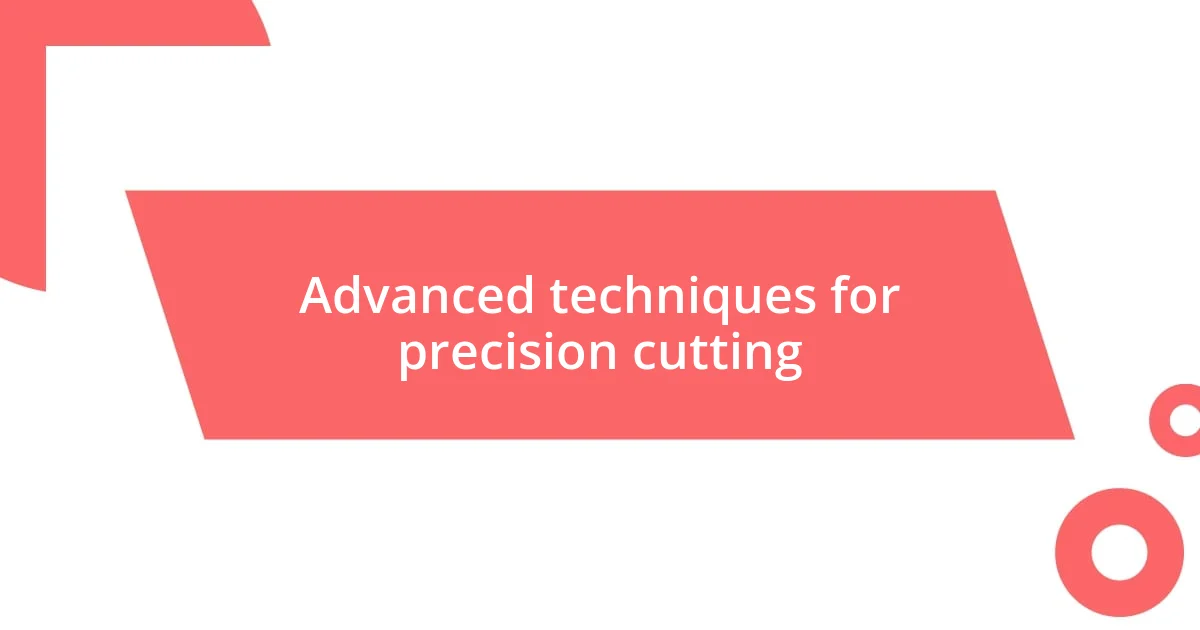
Advanced techniques for precision cutting
Advanced techniques for precision cutting
The precision of my cuts improved dramatically when I started using the pinch grip. Instead of holding the knife with just my fingers, I pinched the blade between my thumb and forefinger, allowing for greater control and balance. When I realized I could cut through herbs with such finesse, it felt like I had unlocked a new level in my culinary skills. Have you tried this grip? If not, give it a shot—it might change how you interact with your knife.
Another technique that elevated my cutting game is the rocking motion. This involves keeping the tip of the knife in contact with the cutting board as you move the blade up and down. Honestly, the first time I attempted this method, I felt a rush of excitement as I chopped through a pile of garlic cloves with such ease. The rhythm became almost meditative. Doesn’t it feel good when a technique clicks and suddenly everything flows seamlessly?
Lastly, I can’t stress how vital angle and pressure are for making precision cuts. I found that adjusting the angle of the knife slightly can make all the difference, especially with delicate items like tomatoes. I remember how proud I was to create evenly sliced pieces—I could finally plate my dishes with skills that matched my vision. Are you ready to experiment with your angles? Trust me, each small adjustment can transform your cooking experience!













